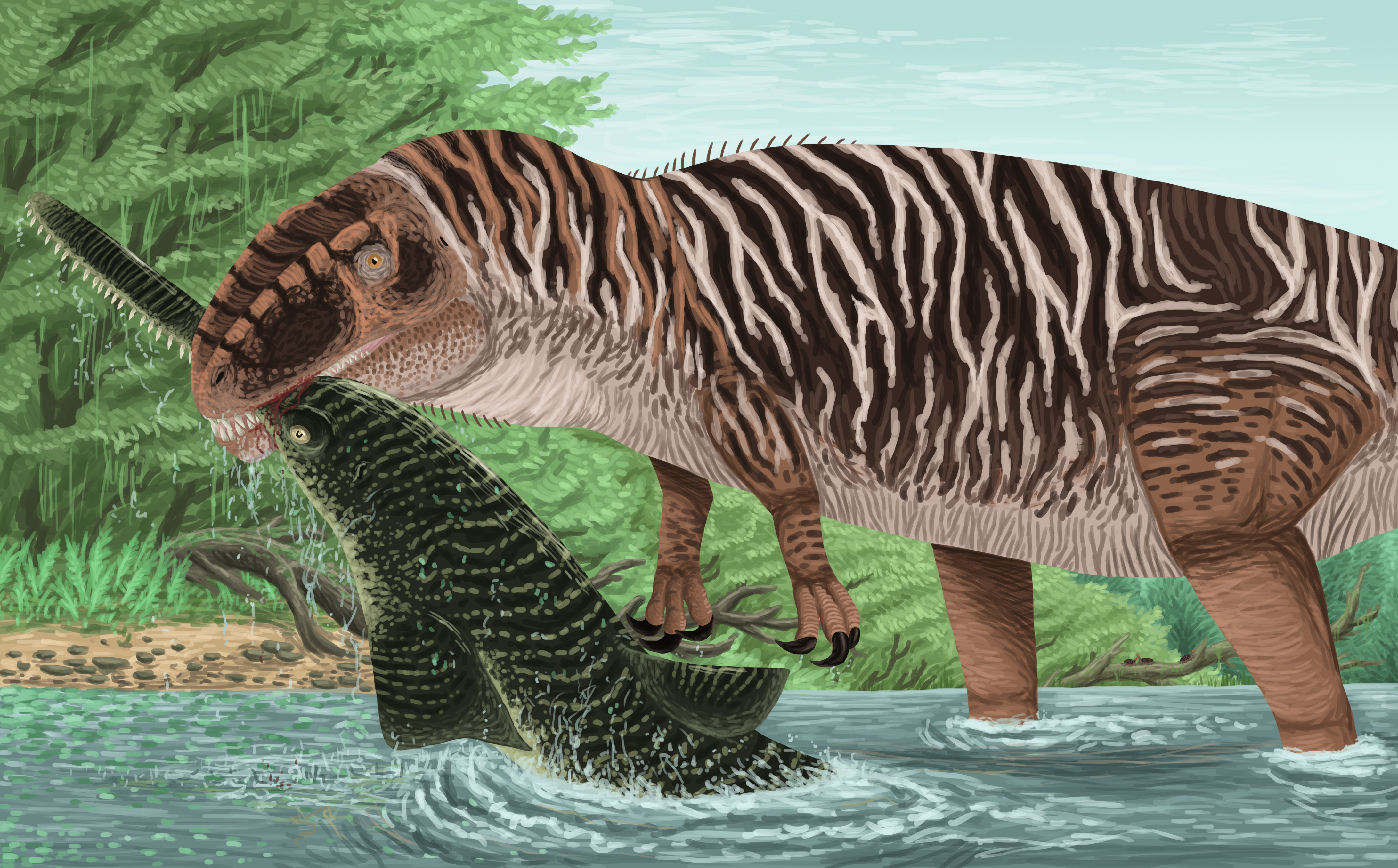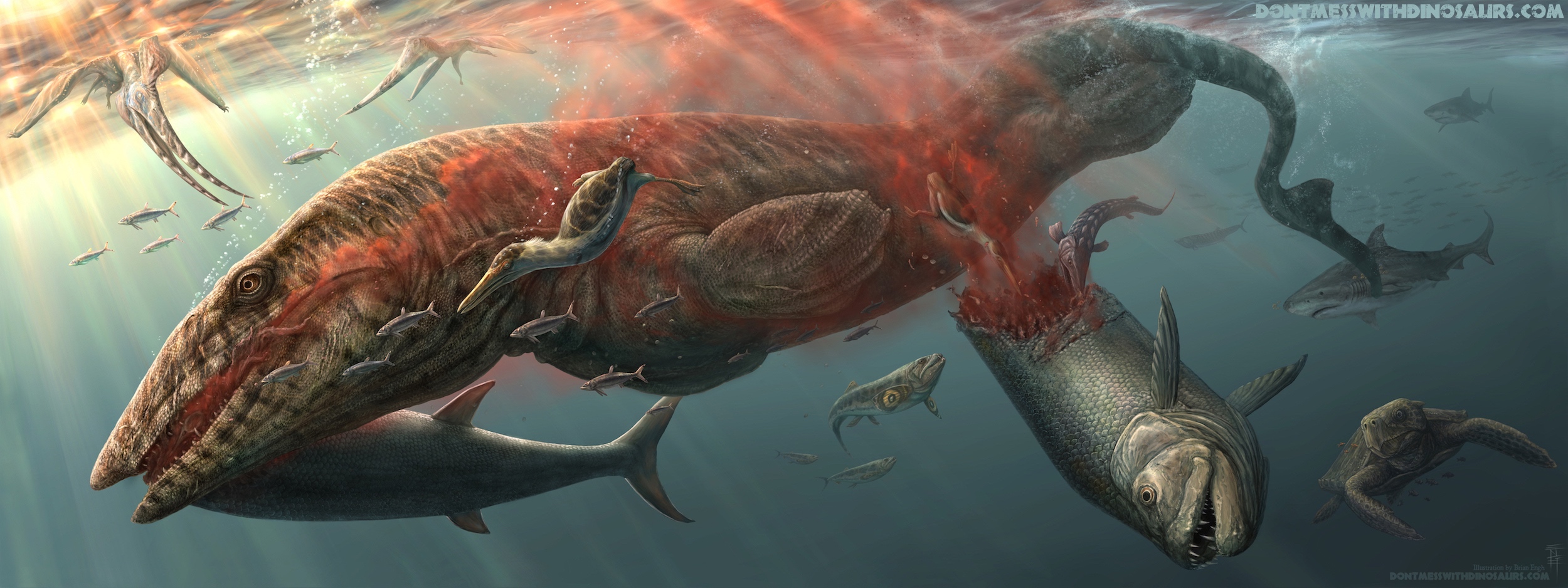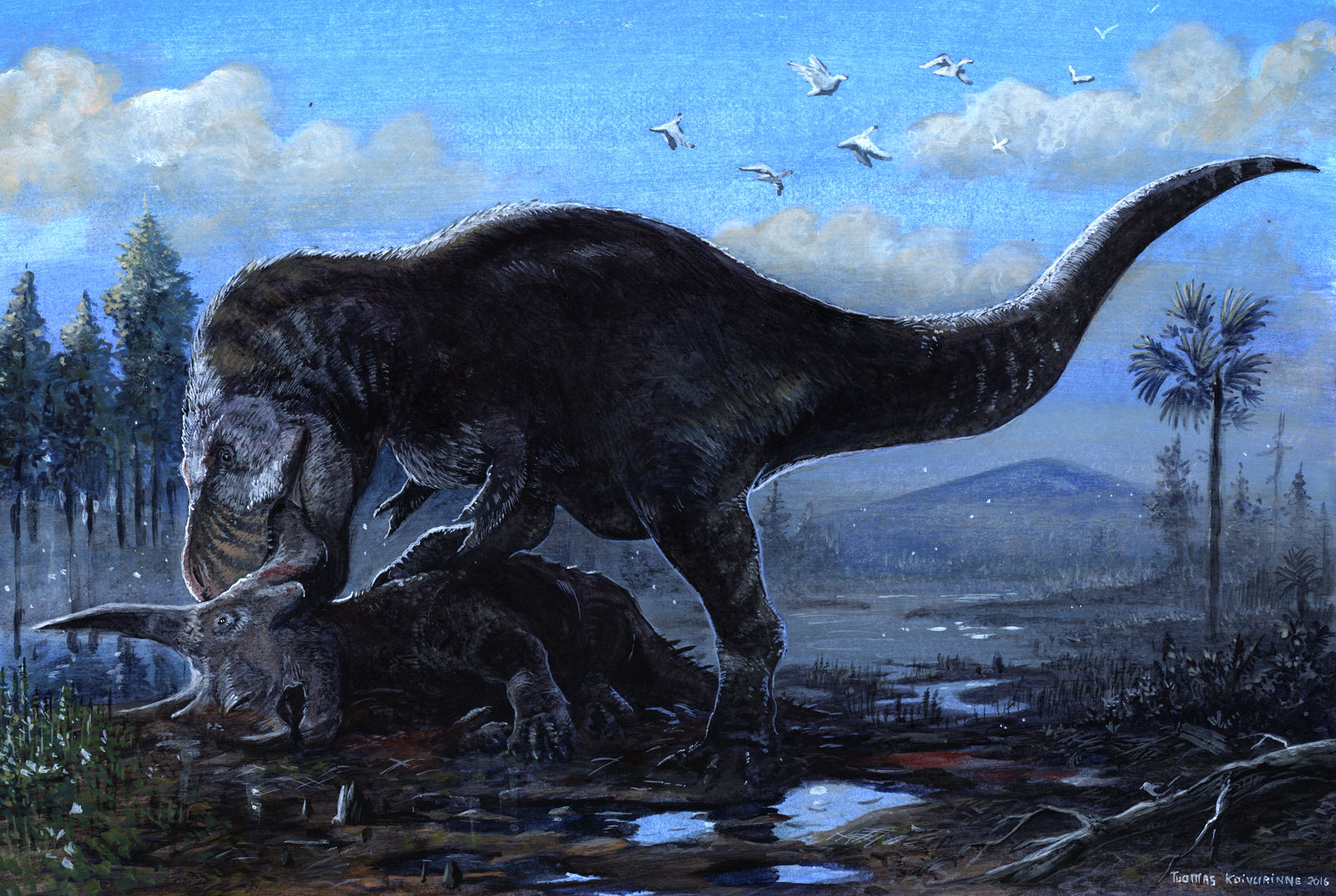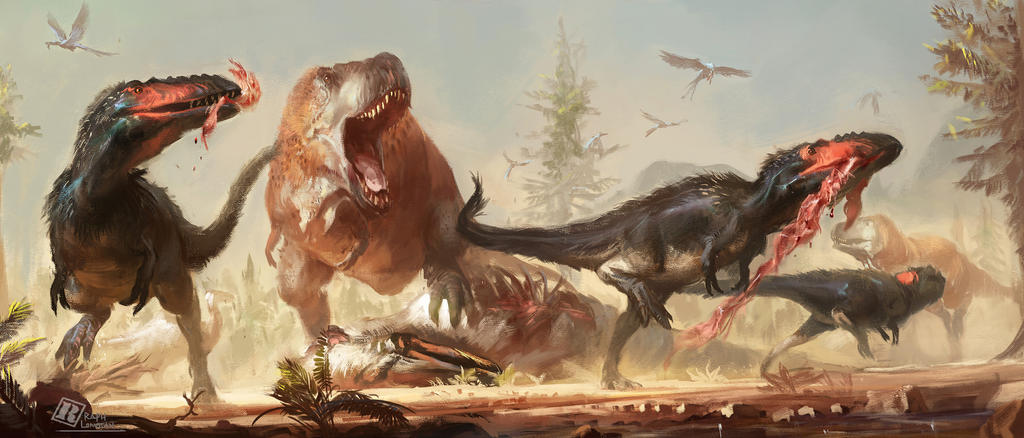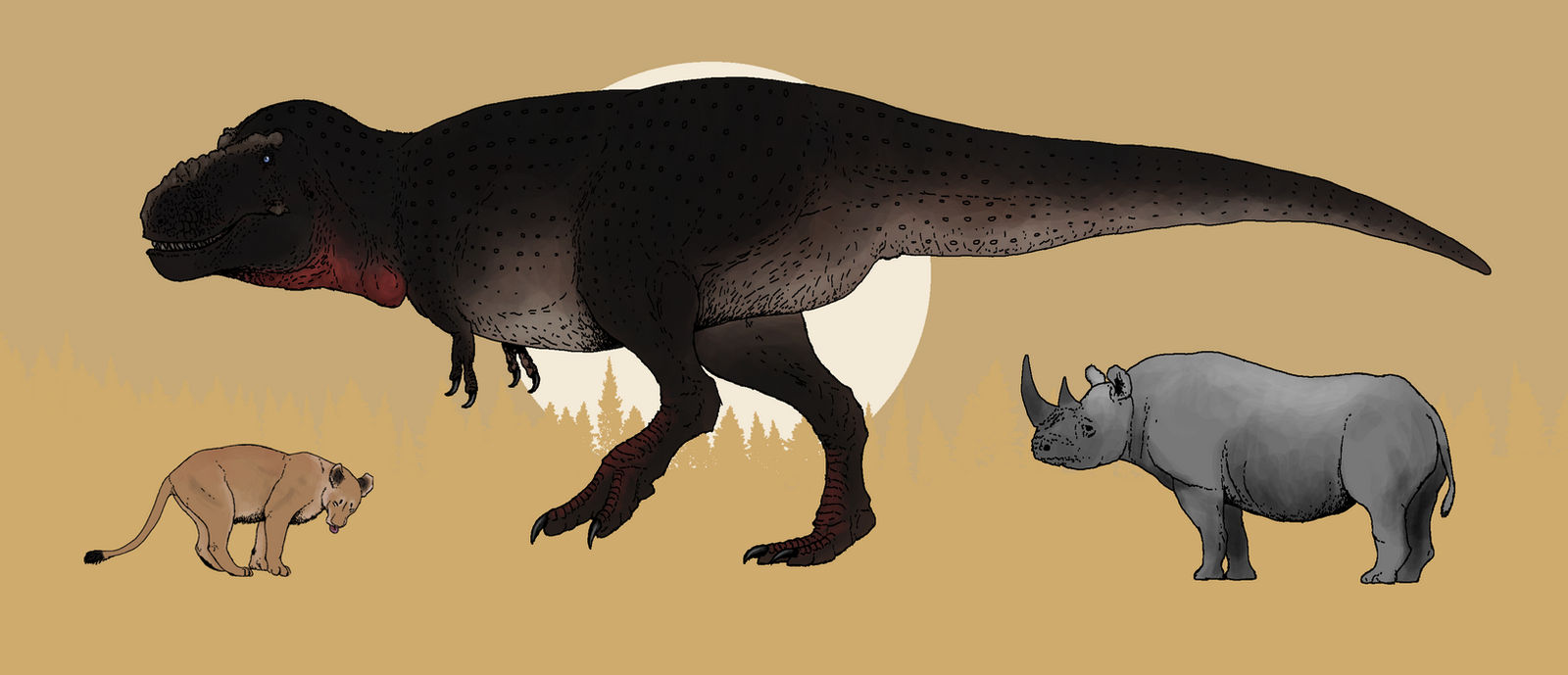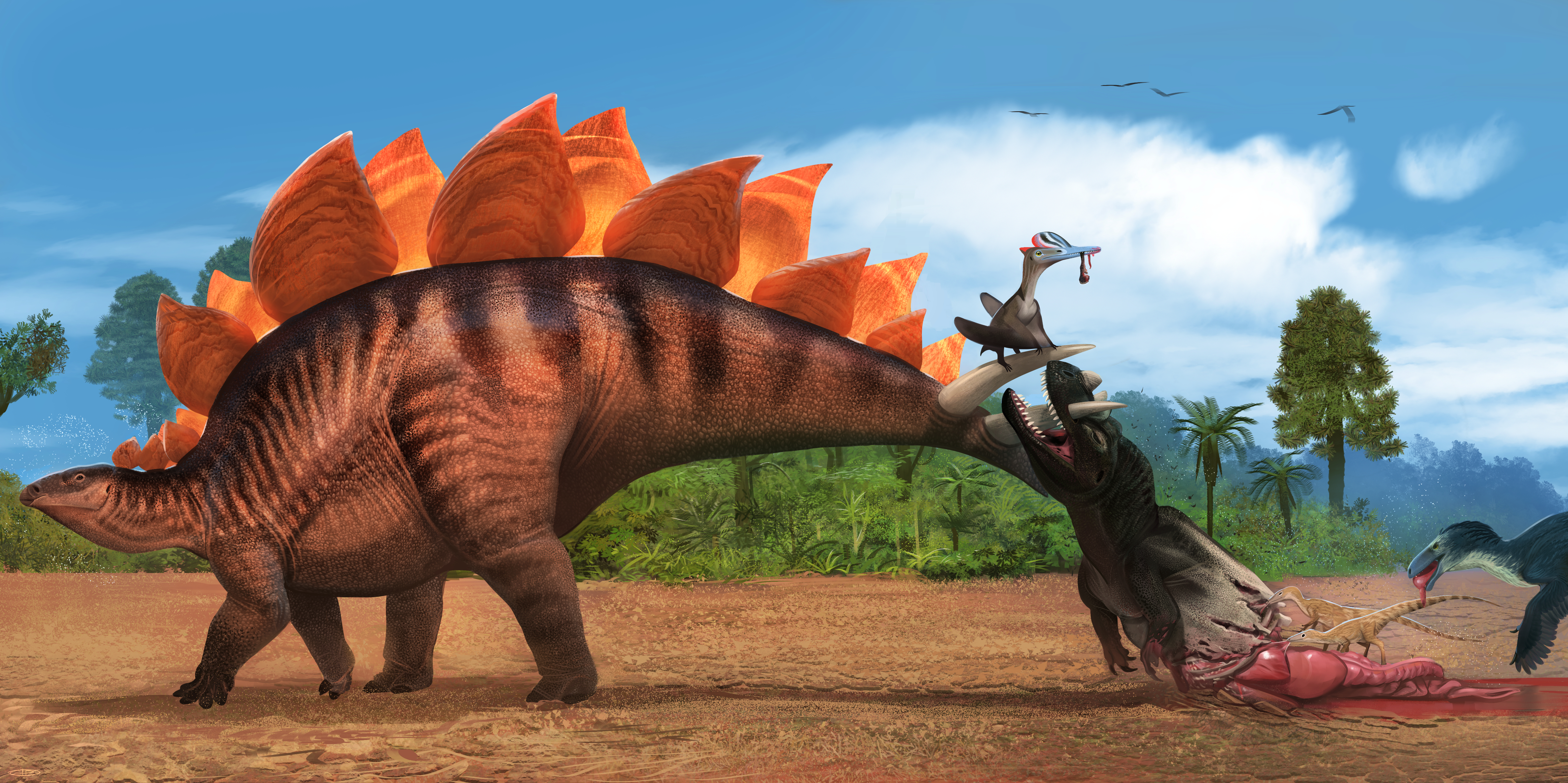Post by Infinity Blade on Dec 26, 2019 18:42:41 GMT 5
There's an awful paleoart thread on this forum. Why not dedicate a thread to paleoart you like?
Post paleoart in here that you like. I encourage you to explain why you like it. Maybe it's really accurate? Or if it's not accurate, maybe it's something about the work of art itself that makes it aesthetically pleasing?
EDIT: I'm going to outline what we consider paleoart here. Most paleontologists agree that scientific accuracy is important in paleoart, while even more agree that the increasing accuracy of paleoart is important (Ansón et al., 2015).
According to the Wikipedia page on paleoart->, Mark Witton describes paleoart as having "...three essential elements: 1) being bound by scientific data, 2) involving biologically-informed restoration to fill in missing data, and 3) relating to extinct organisms. This definition explicitly rules out technical illustrations of fossil specimens from being considered paleoart, and requires the use of "reasoned extrapolation and informed speculation" to fill in these reconstructive gaps, thereby also explicitly ruling out artworks that actively go against known published data. These might be more accurately considered paleontologically-inspired art.".
What I gather from this is that what should be considered paleoart should be contingent on the intent behind it. If it was meant to accurately portray prehistoric life and was based on scientific data and "biologically-informed restoration to fill in missing data", then it can be considered paleoart, even if it is inaccurate by today's standards. What this also means is that popular culture depictions of prehistoric life do not qualify as paleoart (so for example, Jurassic Park's Tyrannosaurus does not count as such). I don't think most people need to be told this, but in case you do, then documentary images-> do not count as paleoart either.
Anyway, happy posting!
Post paleoart in here that you like. I encourage you to explain why you like it. Maybe it's really accurate? Or if it's not accurate, maybe it's something about the work of art itself that makes it aesthetically pleasing?
EDIT: I'm going to outline what we consider paleoart here. Most paleontologists agree that scientific accuracy is important in paleoart, while even more agree that the increasing accuracy of paleoart is important (Ansón et al., 2015).
According to the Wikipedia page on paleoart->, Mark Witton describes paleoart as having "...three essential elements: 1) being bound by scientific data, 2) involving biologically-informed restoration to fill in missing data, and 3) relating to extinct organisms. This definition explicitly rules out technical illustrations of fossil specimens from being considered paleoart, and requires the use of "reasoned extrapolation and informed speculation" to fill in these reconstructive gaps, thereby also explicitly ruling out artworks that actively go against known published data. These might be more accurately considered paleontologically-inspired art.".
What I gather from this is that what should be considered paleoart should be contingent on the intent behind it. If it was meant to accurately portray prehistoric life and was based on scientific data and "biologically-informed restoration to fill in missing data", then it can be considered paleoart, even if it is inaccurate by today's standards. What this also means is that popular culture depictions of prehistoric life do not qualify as paleoart (so for example, Jurassic Park's Tyrannosaurus does not count as such). I don't think most people need to be told this, but in case you do, then documentary images-> do not count as paleoart either.
Anyway, happy posting!








